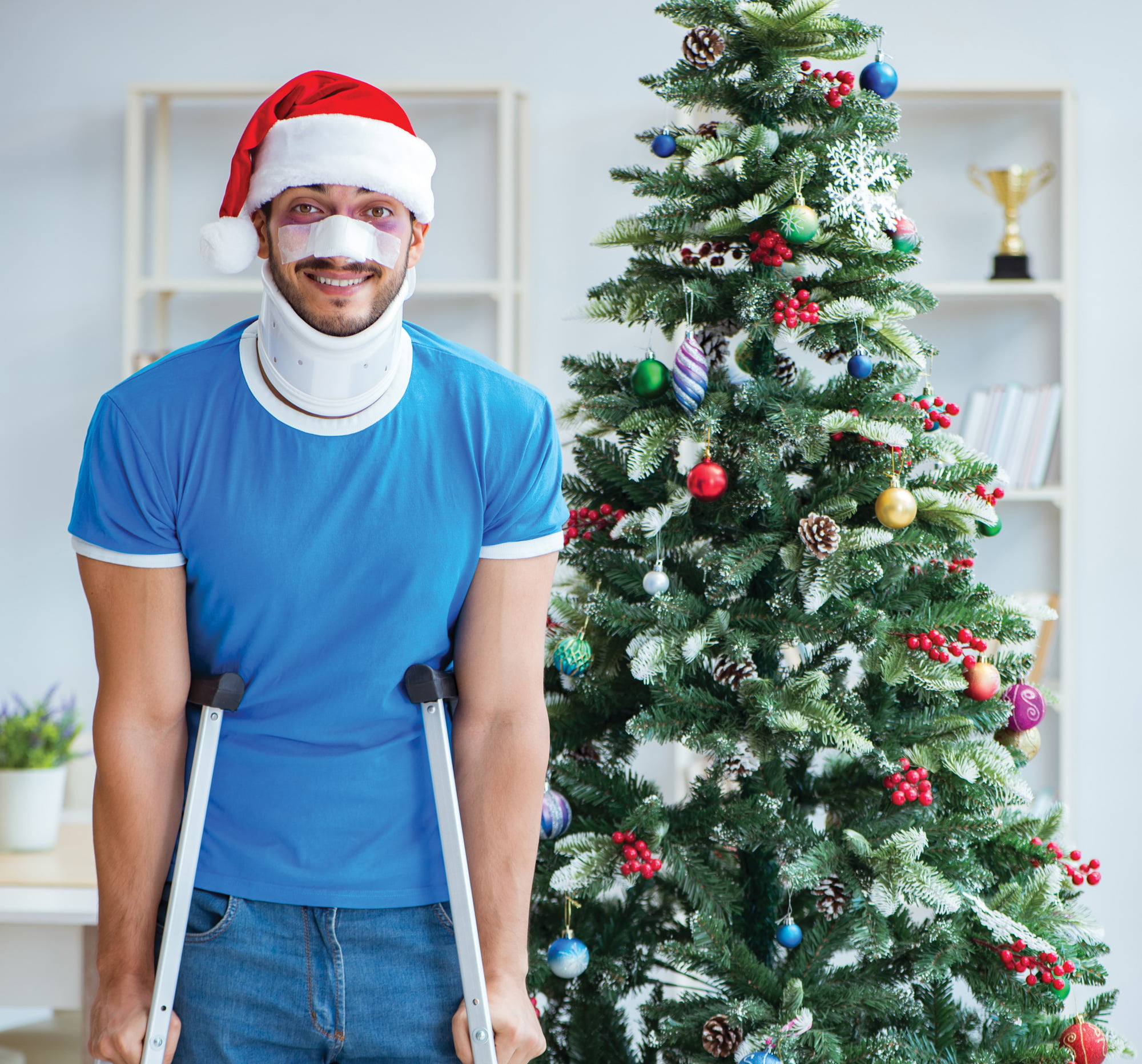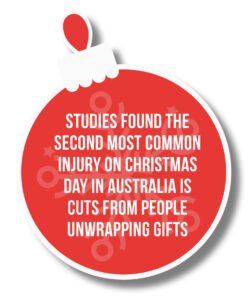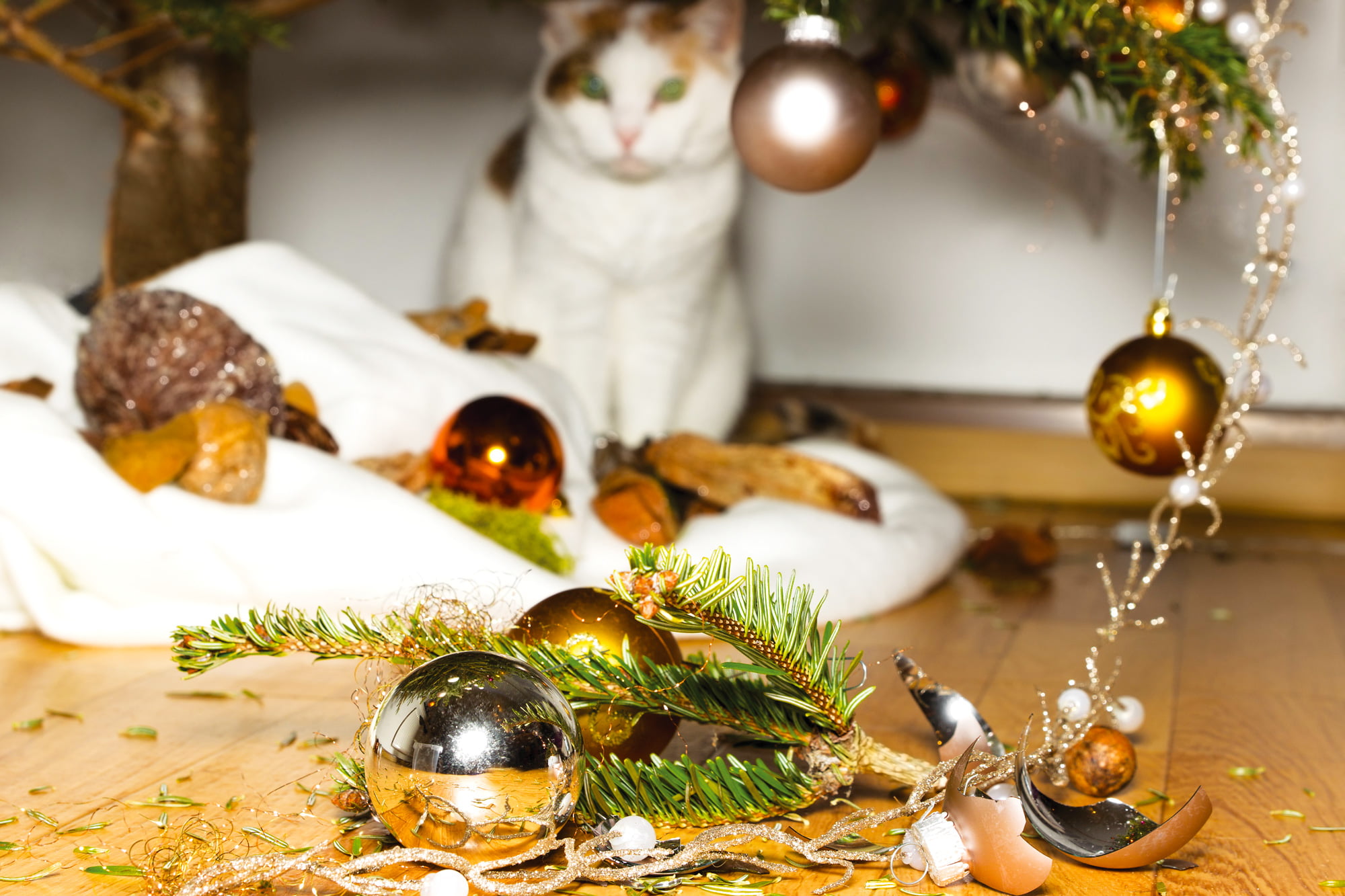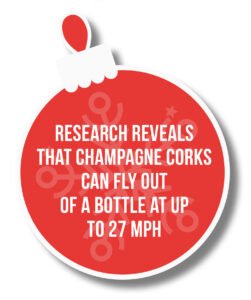 As the silly season commences, the potential for Christmas accidents increase as we deck the halls, prepare epic meals and start drinking Baileys for breakfast (just us?). Indeed, a report in the New Zealand Herald found that 4,000 Kiwis were injured every Christmas Day, and according to the Australian and New Zealand Journal of Public Health, nearly 5,000 Australians are admitted to hospital each year as a result of scaling a ladder. So, move away from the stepladder as Dr Charu Narayanan from International Medical Clinic, Singapore reveals how to avoid possible calamities and keep the holidays happy and trouble-free.
As the silly season commences, the potential for Christmas accidents increase as we deck the halls, prepare epic meals and start drinking Baileys for breakfast (just us?). Indeed, a report in the New Zealand Herald found that 4,000 Kiwis were injured every Christmas Day, and according to the Australian and New Zealand Journal of Public Health, nearly 5,000 Australians are admitted to hospital each year as a result of scaling a ladder. So, move away from the stepladder as Dr Charu Narayanan from International Medical Clinic, Singapore reveals how to avoid possible calamities and keep the holidays happy and trouble-free.
Christmas calamity: My husband had a fall while putting up decorations and has put his back out. How should he handle it?
Dr Charu Narayanan: Unknown to us, we may have some wear and tear going on in the backbone and unusual activity can result in mechanical pain in the back. In these situations, pain relief such as paracetamol and if permitted, an anti-inflammatory medication like ibuprofen, can provide relief from pain and muscle spasm. Pain on coughing and sneezing or sharp discomfort travelling from the back into the legs may point to a potential slipped disc in the spine. Strong pain relief followed by an urgent visit to a doctor is advised if you feel weak in the legs, numbness, or have bladder or bowel symptoms. If there are no concerning features, working with a physiotherapist over a few weeks can get you back in shape.

Christmas calamity: My toddler has swallowed a small plastic part of his new Christmas toy. What should I do?
Dr Charu: Most small round and smooth toy parts which are swallowed are passed out in the stools. If they’re larger, there’s a concern about these getting stuck in the bowel. A sharp object or a metallic toy or coin can cause damage and may need to be located using an X-ray – removal may be needed as these can get stuck in the windpipe. In this circumstance, it’s safer to see a doctor within 24 hours for a check-up. Observe the stools to check for small round objects and monitor your toddler to see if they appear distressed; are coughing, vomiting or drooling; having difficulty breathing or have stomach pain. Symptoms such as these require urgent medical attention.
 Christmas calamity: My young child has been eating holly. I know this can be poisonous – should we go straight to A&E?
Christmas calamity: My young child has been eating holly. I know this can be poisonous – should we go straight to A&E?
Dr Charu: Berries of holly are poisonous and children and pets may accidentally ingest these pretty decorations. If this happens, it can result in diarrhoea, vomiting, and then dehydration in children. Drowsiness may also occur. It’s important to ensure that any remaining berries are removed from the child’s mouth and first aid, water or milk can be offered. Then head to a hospital for monitoring. Activated charcoal may absorb toxins in the stomach in some cases.
Christmas calamity: I had too much mulled wine last night and now I’m suffering a killer hangover. What are the signs that I need more than my bed?
Dr Charu: Red wine and sugar make for a deadly combination. Prevention is easier than cure so try to have some food before alcohol consumption to protect your stomach, and drink water in between serves of wine. Lots of water and a paracetamol will deal with the headache, however, if you’re vomiting and unable to keep fluids down, a trip to hospital would be advisable.
 Christmas calamity: We’re experiencing a family bout of food poisoning. How do we get back to health, and what are the signs that we need to see a professional?
Christmas calamity: We’re experiencing a family bout of food poisoning. How do we get back to health, and what are the signs that we need to see a professional?
Dr Charu: Most episodes of loose stools and vomiting are due to viruses and tend to settle on their own. However, if this affects the entire household simultaneously and happens within a few hours after eating the same meal, it’s likely to be bacterial food poisoning. Keep on top of body fluid losses by drinking enough fluids with a balance of electrolytes (sodium, potassium, chloride). Water, soups, congee, or shop bought rehydration sachets to maintain hydration are the main treatment for food poisoning. Sports drinks can work and probiotics support recovery of the gut lining. Inability to drink, lethargy, floppiness and sleepiness reflect dehydration so visiting a hospital is advisable. Most infections recover without antibiotics but high fever with chills, feeling very unwell and blood in stools indicate that a trip to a clinic is needed.

Christmas calamity: I’ve just stepped on a pointy bauble and cut my foot. It really hurts, but I how do I know it’s serious?
Dr Charu: Remove the object from the floor to avoid further accidents. Give the wound a wash under running water, then check under good lighting to see if any broken shards of glass are still stuck there. If the cut appears clean, apply an antiseptic like betadine or antibiotic cream and dress it. If there’s still evidence of broken glass in your foot, apply a clean dressing and head to a doctor or an emergency ward who’ll be able to help which may include an X-ray. Make sure you’re up to date with your tetanus vaccine and have had one in the past ten years. If not, try to have the jab at the clinic you attend.
 Christmas calamity: My teenage daughter has come home drunk from a festive gathering and I fear her drink may have been spiked. What are the signs and how can I best look after her?
Christmas calamity: My teenage daughter has come home drunk from a festive gathering and I fear her drink may have been spiked. What are the signs and how can I best look after her?
Dr Charu: The symptoms would depend on the type and amount of substance consumed and her weight. Benzodiazepines, amphetamines and ecstasy (although hopefully not in Singapore) are some of the drugs added to spiked drinks. Symptoms may include appearing more intoxicated than expected, nausea, vomiting, confusion and loss of memory, slurred speech, seizures or muscle spasms. You may suspect spiking if she reported only having a small amount of alcohol and feels disproportionately drunk. First things first, move her to a place of safety. Provide her with fluids if conscious and then plan to attend A&E to determine the type of drug used and to treat the harmful effects. Spiking someone’s drink is a crime and must be reported to the police. Educating our teenagers on how to prevent these incidents, for example not leaving drinks unattended or accepting drinks from strangers is essential.
Christmas calamity: I burned my fingers getting the stuffing out of the oven. Help!
Dr Charu: Prevention of these accidents by wearing gloves is extremely important, but if this has happened, place your hand under cool running water for up to twenty minutes to reduce the temperature of the skin and limit damage. A superficial (first degree burn) is likely to be pink and painful without blisters and can be managed at home. Apply an antibiotic cream and a clean dressing. Second degree burns may be pink, blistered and painful. Do not break any blisters and keep it clean using cling film and dressing after applying an antibiotic cream. Third degree burns can look leathery white and are painless as the nerve endings are destroyed. Second and third degree hand burns are a concern because of scarring during the healing period resulting poor hand function so early medical intervention is advised.
 Christmas calamity: I’ve suffered an electric shock thanks to the tree lights. I think I’m okay, but not sure. What to do?
Christmas calamity: I’ve suffered an electric shock thanks to the tree lights. I think I’m okay, but not sure. What to do?
Dr Charu: Thankfully, Christmas lights are likely to be low voltage and serious injuries are not as common as with high voltage sources. However, these types of lights can cause burns at the point of contact with skin or ground so check your hands and feet for signs of burns. Sometimes, an electric shock doesn’t leave marks of external injury but causes damage to tissues with low resistance such as the heart, blood vessels, nervous system and internal organs. The jolt can cause soft tissue injury, falls and fractures while the transmission through organs has the potential to cause an irregular heart beat, cardiac arrest, seizures and even depression or personality changes. If you feel short of breath, dizzy, have chest pain, numbness, vision, hearing, confusion or speech problems, please seek medical help by calling 995.
Dr Charu Narayanan is a UK trained GP based at IMC Katong. He approaches disease in a holistic fashion and places emphasis on prevention. Dr Charu completed her board certification with the Australasian College of Lifestyle Medicine. imc-healthcare.com








